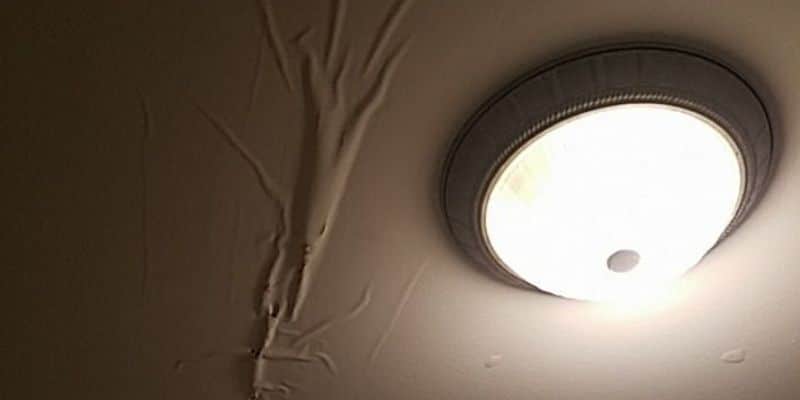What are your ideas regarding How to detect water leaks in your home?

Leakages not just trigger waste of water but can additionally trigger unneeded damages to your home and promote unwanted organic growth. Sadly, water leaks might go unnoticed because most of the pipework in our residence is concealed. By understanding and also looking for daily scenarios that cause leaks, you can safeguard your home from future leaks and unnecessary damages. Today, we will look at six leak triggers that may be creating your pipelines to leak.
Instant temperature adjustments.
Extreme temperature level adjustments in our pipelines can trigger them to broaden as well as contract all of a sudden. This expansion and tightening might create splits in the pipes, particularly if the temperature are below freezing. If you maintained an eye on exactly how your plumbing functions, it would be best. The presence of the formerly stated circumstances frequently suggests a high risk.
Corroded water systems
As time passes by, your plumbing system ages as well as corrosion such as corrosion might start eating away the pipes. This might be the reason for staining or bending on your pipes. This asks for an inspection with your plumber promptly. Take into consideration replacing the pipelines considering that they are at a greater threat of corrosion than the more recent versions if our plumbing system is old.
Malfunctioning Pipeline Joints
The factor at which your pipelines connect is frequently the weakest link in the waterline. Pipeline joints can wear away with time, resulting in water leaks. The majority of pipe joints are not quickly visible. If you have noisy pipes that make ticking or banging noises, especially when the hot water is turned on, your pipe joints are probably under a lot of stress. It is a good idea to have your plumber check your system annually.
Elbowing in roots
The majority of water leaks begin outside the home rather than inside it. You could discover wet spots or sinkholes in your lawn, and that could indicate that tree roots are attacking water lines creating water to permeate out.
Poor Water Connectors
At times, a leak can be triggered by loosened tubes as well as pipes that provide your devices. Usually, moving is what causes the loosened water Connections. You could locate when it comes to a cleaning maker, a tube might spring a leak because of shaking during the spin cycle. In case of a water connections leak, you may see water running straight from the supply line or puddles around your devices.
Blocked Drains
Obstructed drains could be aggravating and inconveniencing, but they can sometimes end up creating an overflow leading to burst pipelines. Maintain removing any products that might go down your drains that can clog them to prevent such inconveniences.
All the above are root causes of leaks yet not all water leaks result from plumbing leakages; some leakages could come from roofing system leaks. All leakages need to be repaired right away to stay clear of water damages.
Leakages not just trigger waste of water but can also trigger unnecessary damage to your residence and promote undesirable natural development. By looking as well as comprehending for daily scenarios that create leaks, you can protect your home from future leaks as well as unneeded damage. Today, we will look at six leak causes that may be causing your pipes to drip.
At times, a leak can be triggered by loose hose pipes as well as pipes that supply your home appliances. In situation of a water links leakage, you might observe water running straight from the supply line or puddles around your home appliances.
How To Check For Water Leak In Your Home
How To Check for Leaks
The average household's leaks can account for nearly 10,000 gallons of water wasted every year and ten percent of homes have leaks that waste 90 gallons or more per day. Common types of leaks found in the home are worn toilet flappers, dripping faucets, and other leaking valves. These types of leaks are often easy to fix, requiring only a few tools and hardware that can pay for themselves in water savings. Fixing easily corrected household water leaks can save homeowners about 10 percent on their water bills.
To check for leaks in your home, you first need to determine whether you're wasting water and then identify the source of the leak. Here are some tips for finding leaks:
Take a look at your water usage during a colder month, such as January or February. If a family of four exceeds 12,000 gallons per month, there are serious leaks.
Check your water meter before and after a two-hour period when no water is being used. If the meter changes at all, you probably have a leak.
Identify toilet leaks by placing a drop of food coloring in the toilet tank. If any color shows up in the bowl after 10 minutes, you have a leak. (Be sure to flush immediately after the experiment to avoid staining the tank.)
Examine faucet gaskets and pipe fittings for any water on the outside of the pipe to check for surface leaks.
Undetected water leaks can happen without the home or business owner even realizing. If you suspect a water leak, but not able to find the source. It is time to contact a professional water leak detection service, The Leak Doctor.
How To Find a Water Leak In Your Home
https://www.leakdoctor.com/blog/How-To-Check-For-Water-Leak-In-Your-Home_AE197.html

As a passionate reader about How to Find Water Leaks, I thought sharing that excerpt was worthwhile. Sharing is good. One never knows, you may very well be helping someone out. We value reading our article about How to detect water leaks in your home.
Damage control? Call us.